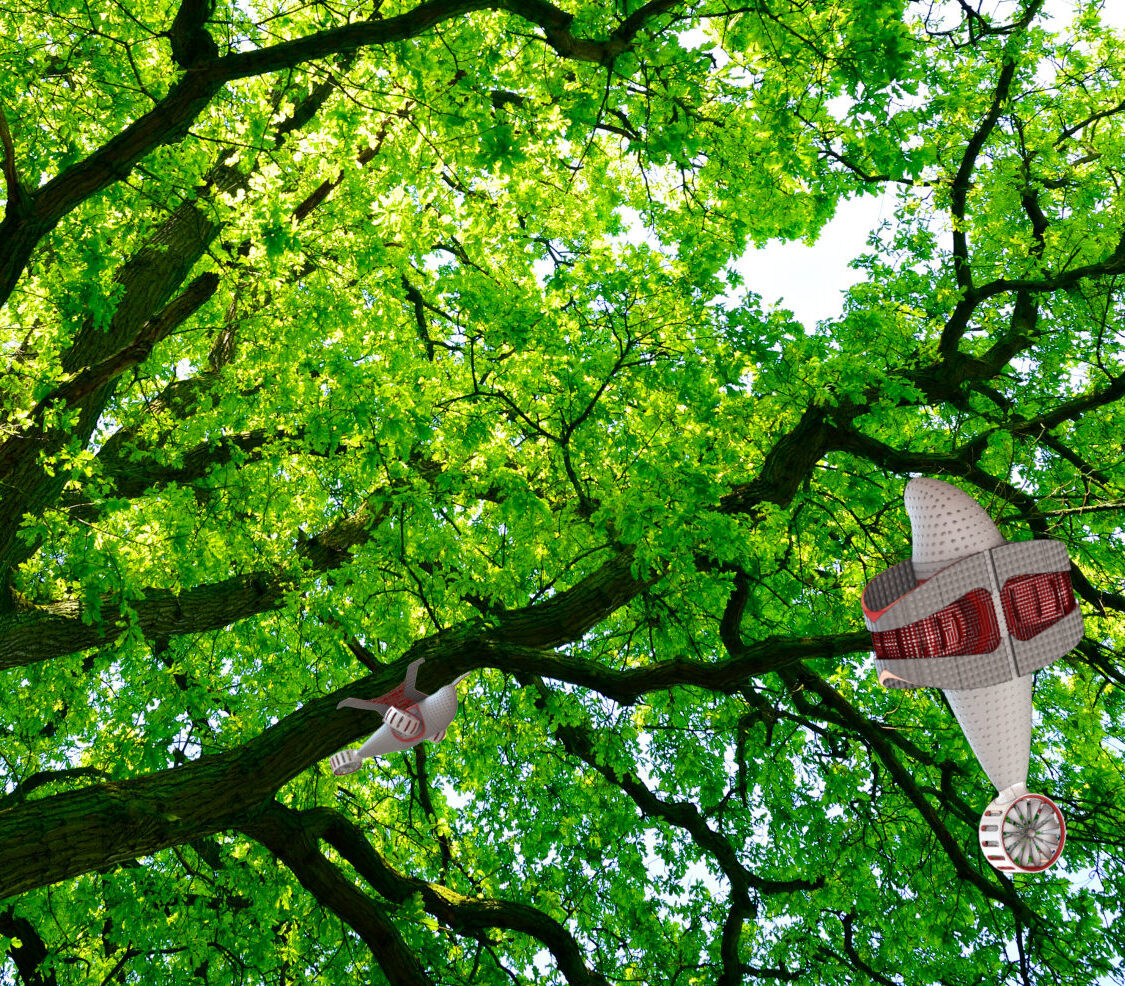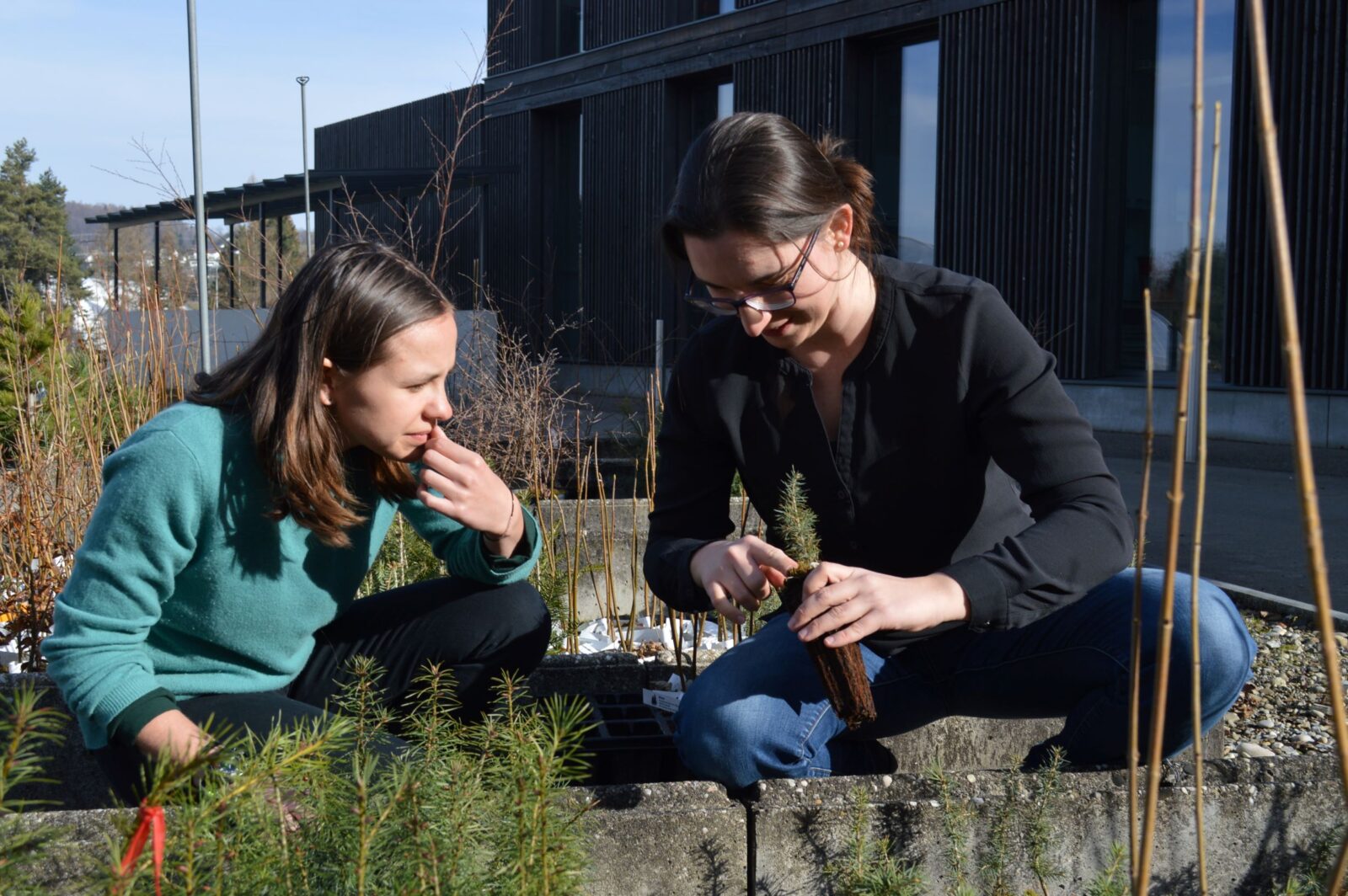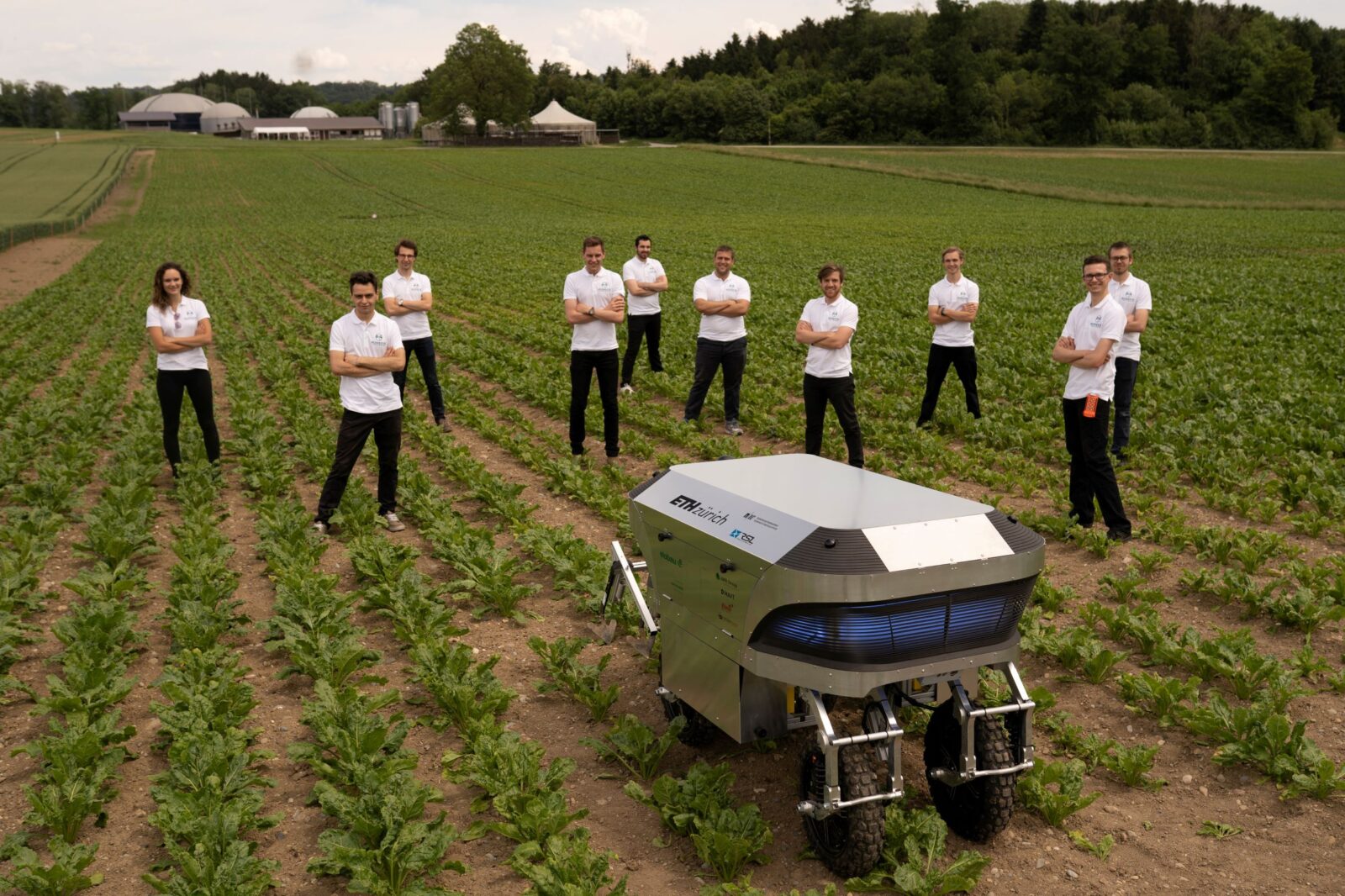Smart farming
In the service of more sustainable management
Agriculture ought to become more efficient, environmentally friendly and sustainable. In order to come closer to this goal, various groups of the Institute for Agricultural Sciences (IAS) are driving the development of modern technologies. At ETH, weeding robots, independent cows, hovering plant breeders and emission-measuring barns are already a reality.
Agriculture today faces many challenges. The population, as well as experts, are demanding more animal welfare and more environmentally friendly production. At the same time, management must be adapted to the changing climate.
This puts pressure on both researchers and farmers to find alternative production methods. “Modern technologies such as image recognition, artificial intelligence and automation can contribute to this,” says Achim Walter, Head of the Crop Science research group and smart farming expert. And he continues: “The development of new methods and machines has always been a strength of ETH. In the field of smart farming, this strength can be put to excellent use in the service of more sustainable management of our fields. Together with farmers, authorities and companies, ETH researchers are trying to find out which technologies can be used in practice in the near future.”
Machines learn to evaluate images
The term “smart farming” refers to the use of computer-assisted technologies in agriculture. Smart farming can be practised in very many areas, which is also reflected in the diversity of research projects at ETH. A pioneering role is played by Achim Walter’s Crop Science group. It is involved in several projects at once. The DeepField project is developing a way to use satellite imagery to make very precise fertiliser recommendations for nitrogen in the future. Two ongoing projects aim to make grain breeding more efficient: For the Global Wheat Head Detection Challenge, algorithms are being created to determine the number of wheat heads per area in photos – an important indicator for breeding. The second project, TraitSpotting, uses the unique Field Phenotyping Platform in Lindau-Eschikon and drones to select the best varieties for further breeding.



Reducing pesticides with robots
In addition to the development of image recognition software, ETH is also investing in various other research projects aimed at optimising crop production, for example in the development of new sensors or robots. The latter both in the form of drones and autonomous robots that can navigate a field and be used for sowing, pest control or harvesting. There is a lot of potential here for reducing the use of pesticides or fertilisers. The robots are intended to reliably detect nutrient deficiencies or bioaggressors and combat them in a very targeted manner. This means they only apply fertiliser or pesticides where absolutely necessary. Or, in the case of weeds, they dispense with herbicides altogether and carry out control mechanically. The aim is to not only reduce the amount of additives in the environment, but also lighten the burden on farmers.


Tailored to the specifics of Switzerland
Many of the existing technologies are geared towards large farms, which is an obstacle to their use in Switzerland with its small-scale structures. Often an investment is not worthwhile from a purely economic point of view. This is where the InnoFarm project comes in, involving three research groups and the farmers’ association of the canton of Solothurn. Research is being conducted into how drones and the latest sensor technology can be used to apply nitrogen and pesticides in a more targeted manner and thus reduce them. Based on the resulting data, the Agricultural Economics group is reviewing whether and how these technologies can actually be used in practice, for example whether each farmer procures a drone for himself, several farms share one or whether it is a job to be done by contractors. The project also investigates the role that agricultural policy can play.


An important element in the study programme
The topic of smart farming is also becoming increasingly important in teaching. In recent years, new lectures such as “Crop phenotyping” or “Innovation in precision agriculture” have been launched. Here, students are introduced to the world of digitised agriculture, learn about the latest technologies and their limitations, apply the technologies themselves, develop their own ideas, have the opportunity to found start-ups and benefit from the exchange with students from other departments.


Applied smart farming in farm animal sciences
An example of applied smart farming is the dairy barn at AgroVet-Strickhof in Eschikon. It is equipped with modern sensor technology that allows a high degree of animal welfare. The cows are largely independent. They operate milking robots and automatic feeders themselves based on their own needs. In addition, the activity of each animal is recorded. The regularity of chewing movements, number of milkings per animal and day and visits to the automatic feeder are recorded. This makes it possible, for example, to detect possible diseases at a very early stage.